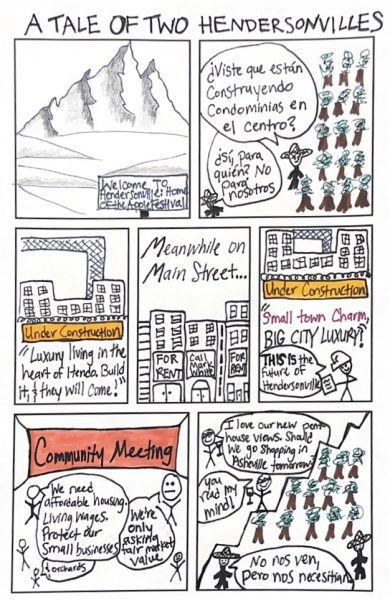I’ve formerly disclosed my distaste regarding the construction of penthouse apartments in downtown Hendersonville, not solely because I’m critical of the “build it, and they will come,” strategy applied in urban development.

There’s a comical juxtaposition between the architectural rendering of million-dollar luxury apartments despite a local economy heavily dependent on the apple industry and the migrant farmers who sustain it.
In addition to the recent construction of luxury apartments, I was inspired to approach this topic because several years ago, I came across a Facebook post made by a local orchard in Hendersonville.
The orchard was combating claims they only hired migrant workers when, according to the owners, migrant workers were the only individuals who were willing to return to the farm each season.
My goal was to point out the irony of promoting “small-town charm” to attract new investors while ignoring the very individuals who helped create it. The inf
lux of capital, including the transformation of social capital and the displacement of local business owners, suggests an economic and demographic shift at the macro-level.
These are all defining characteristics of gentrification.
When I interviewed local business owners and real estate agents for an article I wrote in March regarding the ten vacant commercial units on Main Street, the phrasing “fair market value,” FMV, emerged in several conversations. Fair market value is determined by what buyers are willing to pay and what sellers are willing to accept.
It often reflects what wealthier newcomers can afford, not what current residents can sustain.
Property values may rise as neighborhoods become more desirable through development, branding or cultural shifts. Higher-income individuals and developers purchase properties at higher rates, increasing FMV for the entire area.
It raises a concern. Can Hendersonville balance its future with its past?


![Brooke Pedersen [second from the right] and Luis Reyes [right] hold banners during the Wrap The Woods event.](https://thebluebanner.net/wp-content/uploads/2025/09/ELIZABETH_PRITCHITT_IMG_3470-1200x804.jpg)














